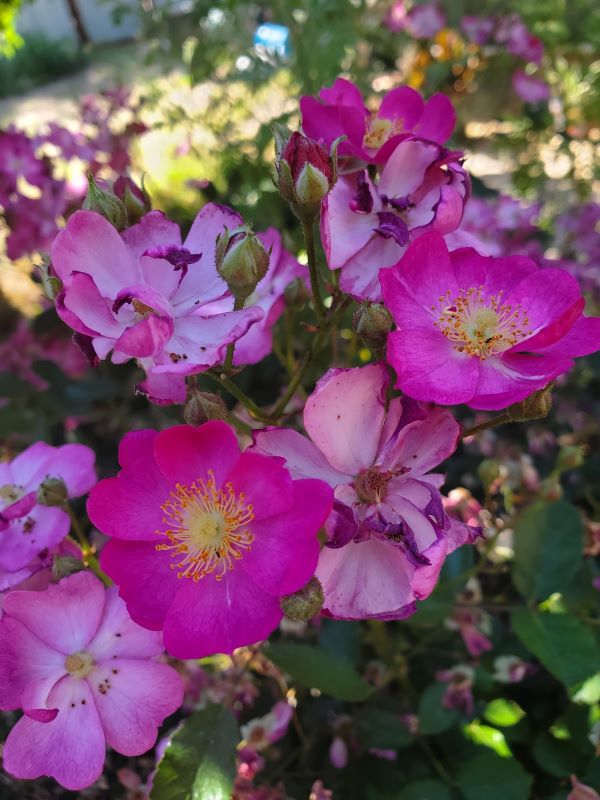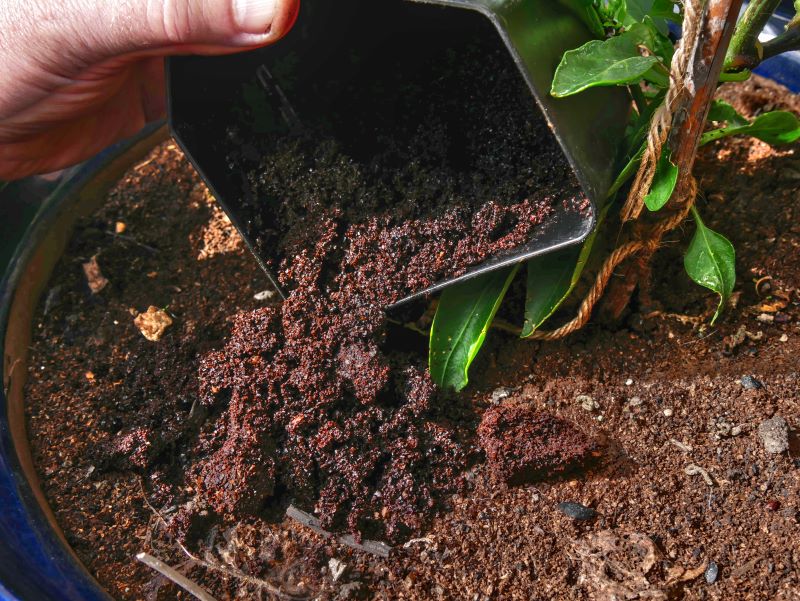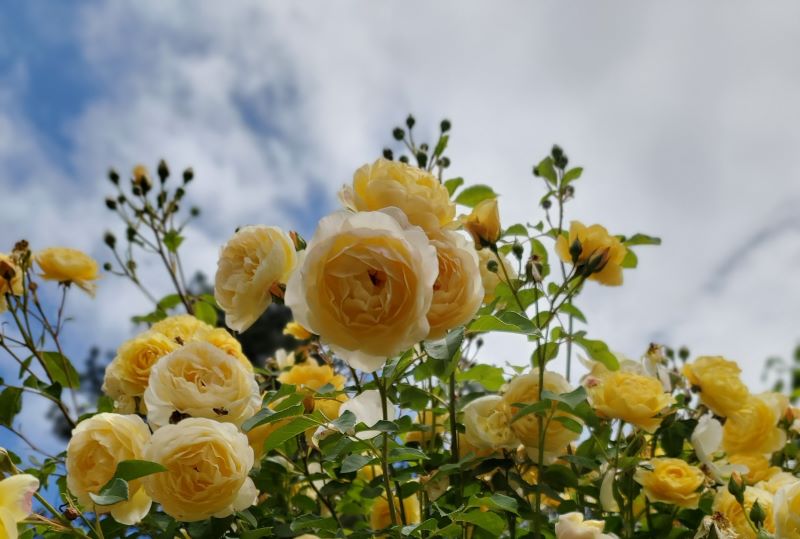Time, Bath Salts, Coffee Grounds, and Roses
By Josh Reilly
I have always imagined time as a sort of vertical ellipse, slowing down as it passes through Winter, then accelerating through Spring and rocketing through Summer in a blinding flash. Then, as October arrives, it seems to coast on inertia alone until that is almost exhausted, just as Winter ends and the cycle begins again. Nature is getting busy in March. Our little gondola on the eternal elliptical loop of time, is picking up speed.
So, consider this column a reminder to complete tasks for prepping for Spring. Perhaps foremost among these is adding fertilizer. When I started gardening here in Ben Lomond, I used very little fertilizer, no more than one to two light feedings with a balanced NPK (nitrogen, phosphorus and potassium) product and on the potted plants only. To planting beds, I added truckloads of compost, often using “50/50” mix (from Central Home Supply in Scotts Valley), a mixture of mushroom compost and “nitrolized” sawdust, adding tilth and nutrition to the soil. I have also been making and spreading my own compost for 23 years. Between those two processes, I assumed I was getting the macro and micronutrients needed to sustain my plantings, which have always focused more on ornamentals than edibles. Results were acceptable, but not superb. Once I added roses, my methods had to change. I try now to fertilize potted plants and “heavy feeders” in the soil at least three times per year, often starting in February, but it’s not too late now.

You may have heard of using bath salts and coffee grounds on your rose beds. I’ve been using coffee grounds semi-regularly for years. Usually compost them, but this year, I tossed about a shovel blade full under each rose. And this year, I’m going to try bath salts. Bath salts contain magnesium, a necessary plant nutrient, which may be deficient in your soil. Plants deficient in magnesium may have yellowing foliage lined with green veins. Bath salts can help you reverse this. Apply now and use sparingly. Martha Stewart suggests a rate of “1/2 cup to 1 cup of per plant, or 1 teaspoon of Epsom salt per 1 foot of the plant’s height.” Oddly, these measures are not in any way equivalent. Many roses are no taller than 3 to 4 feet; 3 to 4 teaspoons does not equal a ½ cup. Stewart also suggests repeat applications throughout Spring. I would go easy. Try one or two this season and see how it goes (All this makes me wonder if her buddy Snoop Dog uses bath salts in his “Leafs by Snoop” product line). You can get “Remarkable Redwood Products Bath Crystals” at Wild Roots or Felton Nutrition. It’s a great product made right here in the Valley. And you don’t need the more expensive version containing CBD. Your roses don’t have knee problems, and they don’t need to “chill.”

30-gallon plastic bags full of coffee grounds can be found at Coffee Nine on Hwy 9, usually by about noon, almost every day. The owners have been putting them out by their shed for us gardeners for decades. Thank you, dear neighbors! These can be applied around your roses in a thin layer and raked or scratched into the surface. Coffee grounds are a bit acidic and roses like their soil slightly acidic, around pH 6 – 6.5 (7 is neutral). There is some debate as to whether coffee grounds actually acidify the soil, but they do make other important contributions, including high amounts of nitrogen, vital for foliar growth. They also add carbon. Solid carbon compounds in the soil are of no direct use to rose plants, but they are a necessary substrate for soil microbes. Without the almost infinitely complex biome of bacteria and fungi in the soil, the surface of our planet would look a bit more like that of Mars, but without all the nice, warm reddish brown designer colors.
Josh Reilly, aka Uncle Skip, writes about seasonal gardening from his home in beautiful Ben Lomond, California.
Featured photo by Josh Reilly
***
Have news or stories to share? The San Lorenzo Valley Post welcomes your Santa Cruz Mountains news, story ideas, photos, and letters. Send us an email.
Sign up for our newsletter to stay connected to news and events in the Santa Cruz Mountains.
The San Lorenzo Valley Post is your essential guide to life in the Santa Cruz Mountains. We're dedicated to delivering the latest news, events, and stories that matter to our community. From local government to schools, from environmental issues to the arts, we're committed to providing comprehensive and unbiased coverage. We believe in the power of community journalism and strive to be a platform for diverse voices.





